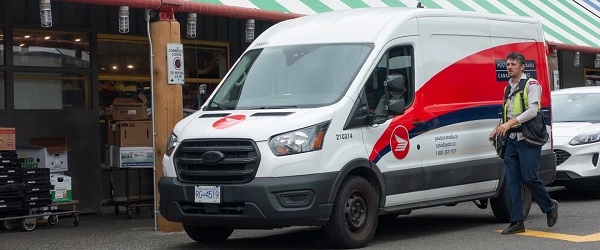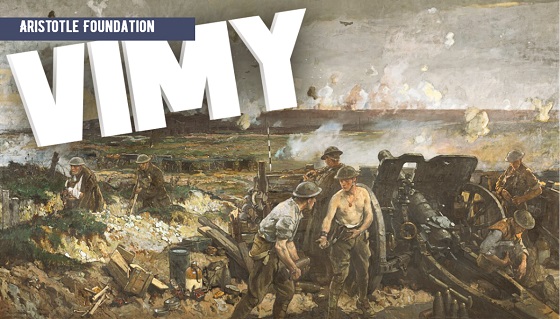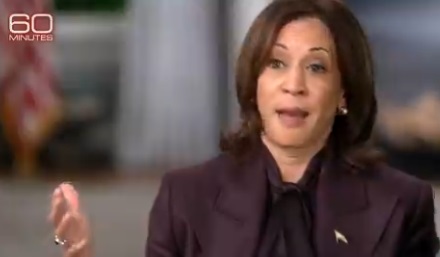Alberta
Province has three scenarios for return to school in September. Final decision by August 1. Details

From the Province of Alberta
Getting ready for 2020-21 school year
A comprehensive re-entry plan for the upcoming school year allows schools and parents to prepare for learning while putting student and staff safety first.
The plan offers guidance on a wide range of operational issues including hygiene and health requirements, student learning, transportation and diploma exams. It also addresses mental health and psychological supports for students and staff.
School authorities will plan for all three scenarios for September:
- In-school classes resume (near normal operations with health measures)
- In-school classes partially resume with additional health measures
- At home learning continues (in-school classes are cancelled)
The preferred and likely scenario is that students will return to daily in-school classes at the beginning of the year. The government will share its final decision by Aug. 1 on which scenario will be in place at the beginning of the school year. However, school authorities are asked to prepare for implementing any of the three possibilities during the upcoming school year, including on short notice.
“We are providing clear direction and the certainty parents and the school system need to plan ahead and get ready for what the new school year may look like. We are hoping, and it is likely, students can return to daily classes at school while taking health precautions, but we have to prepare for all possibilities. I want to thank our education leaders, teachers and parents for their thoughtful contributions to this comprehensive plan.”
“This plan puts the interests of students and staff first. Educators, administrators, families, health professionals and government all need to work together to support a safe return to in-person classes. We continue to monitor the situation closely. The reality is, we must weigh the risk of prolonged school closures against the risk of COVID-19 outbreaks in closed settings, such as schools. A safe and successful school year will only be possible if we all work together.”
The re-entry plan balances the need for provincial standardized approaches in some areas while also providing flexibility and recognition of school authorities’ autonomy to address health guidelines in the most effective ways in their own communities.
Alberta Education worked closely with many education partners on the plan, including the Alberta School Boards Association, the Alberta Teachers’ Association, the College of Alberta School Superintendents, the Association of Independent Schools and Colleges in Alberta, The Association of Alberta Public Charter Schools, individual school authorities and the Alberta School Councils’ Association which compiled input from more than 66,000 parents.
“The Alberta School Councils’ Association is pleased that considerations for the safety of students and staff remain priorities throughout this detailed plan, along with the recognition that school authorities are best suited to making operational decisions directly impacting their local school communities. We look forward to ongoing work and communications with the ministry, as this is key for successful implementation and return to school.”
“Alberta’s teachers are looking forward to supporting our students as we transition into the 2020-21 school year. As our recent survey indicates, teachers are concerned about the health and safety of themselves, their colleagues and their students. We expect to work with government to strengthen and improve the plans for re-entry to ensure that schools can provide healthy and safe environments for teachers and students.”
“Supporting the health and safety of students and staff continues to be a top priority for the ASBA and all school boards. We appreciate government providing clarity, while ensuring flexibility and autonomy, as each of Alberta’s public, Catholic and Francophone boards face challenges within the context of their local communities. As the situation evolves, we will continue to collaborate with government and our members to adjust the plan in preparation for the upcoming school year.”
“The College of Alberta School Superintendents joins the province in its commitment to protecting the health and well-being of all students and staff as we transition to the 2020-21 school year. We appreciate the collaborative manner in which the re-entry plan has developed and are pleased that school divisions have been provided with the flexibility and authority to implement procedures beyond the plan that they deem necessary to ensure the safety of their learning environments.”
“We are deeply appreciative of the ongoing consultation with all educational partners by the Minister of Education and the ministry as a whole in these trying circumstances. Teachers and systems have responded to the pandemic with remarkable energy and ingenuity. The proactive, engaging leadership of our government continues to be essential for education to fulfil its vital role in Alberta through this critical time.”
“Our association appreciates the government’s collaborative approach in developing this re-entry plan. We remain committed to supporting our schools so that their staff and students can experience a safe and positive learning environment in the coming academic year.”
Public health guidance for schools
Return to in-school class learning may vary across the province and is dependent on the number of COVID-19 cases in the local area. School boards should develop their own COVID-19 plans under the applicable scenario and health guidelines prior to reopening.
Measures to reduce the risk – scenario 1 (in-school classes resume – near normal operations with health measures)
Cleaning
- Enhanced cleaning and disinfecting, including daily cleaning for all areas of the school, washrooms and high-touch surfaces cleaned several times a day or more as needed.
- Regularly scheduled deep cleaning when students are not present.
Student/staff hygiene and illness
- Routine screening for all staff and students.
- Strict stay-at-home policy for any students or staff exhibiting symptoms of COVID-19.
- Hand hygiene expectations when entering and exiting the school and classrooms, before and after eating.
- Continual reminders of the importance of respiratory etiquette (e.g., cover coughs and sneezes, avoid touching the face and disposal of used tissues promptly, followed by hand hygiene).
- Students who develop symptoms at school may be asked to wear a mask and isolate in a separate room until a parent arrives for pickup. If a separate room is not available, the student must be kept at least two metres away from other individuals.
Physical distancing and grouping
- When possible, practise some physical distancing as a good precaution to prevent the spread of disease.
- In classrooms, buses and during activities when physical distancing may not be possible, extra emphasis is put on other hygiene practices.
- Reorganization of rooms to allow for more physical space.
- Cohorting of students by class where possible.
- Guiding foot traffic flow through entrances and hallways by using markers on the floor or pylons/barriers.
- Avoiding large gatherings such as assemblies.
Masks
- Staff and students will not be mandated to wear masks.
- Masks may be considered in circumstances where there is prolonged close contact (greater than 15 minutes) and distance of two metres cannot be maintained.
- Masking is generally not recommended for younger students.
Shared items
- A no-sharing policy – all students should have their own supplies.
- Where sharing of equipment is required, the equipment should be cleaned between uses.
Cases of COVID-19 in a school
- The zone medical officer of health will work with school authorities on the rapid identification of cases through easily accessible testing, rapid close contact identification, and isolation measures when needed.
- The zone medical officer of health will also work with school authorities to provide follow-up recommendations and messaging for staff, parents and students.
- Alberta Health Services may request the school to close in-person classes to allow the public health investigation to take place.
- Each school authority will support students and staff to learn or work at home if they are required to self-isolate.
Measures to reduce the risk – scenario 2 (in-school classes partially resume with additional health measures)
The same considerations as scenario 1, with the following differences:
- A recommended maximum of 15 people in a classroom to allow for more consistent physical distancing.
- Students will attend school less regularly as school authorities will need to adjust their class schedule and configuration to meet the physical distancing requirement.
Non-COVID-19 operational highlights
- Any summer programming will follow scenario 2 of the re-entry plan and the associated public health measures.
- August diploma exams will proceed for students taking diploma courses this summer.
- For the 2020-21 school year, diploma exams will be held if the first or second scenarios are in place. In scenario 3, exams may be cancelled.
- Provincial achievement tests (PATs) for Grades 6 and 9 can be held in the first and second scenarios, but will be optional for school authorities to participate.
- If scenario 3 is in place at the beginning of the school year, the January PATs will be cancelled. May/June PATs may be cancelled based on the duration of at-home learning.
- School authorities can, as deemed appropriate at the local level, reduce time spent teaching non-core subjects to allow for additional instruction time on core subjects.
- School authorities must enable the full participation and inclusion of students with disabilities under each scenario and address any learning gaps from the 2019-20 school year.
- Mental health supports should be in place for students and staff.
This plan is part Alberta’s Relaunch Strategy to safely begin removing public health restrictions and reopen our economy. For more information, visit alberta.ca/RelaunchStrategy.
Alberta
Alberta government records $8.3 billion surplus—but the good times may soon end

From the Fraser Institute
By Tegan Hill
According to last week’s fiscal update, the Smith government recorded a $8.3 billion surplus in 2024/25—$8 billion more than what the government projected in its original 2024 budget. But the good times won’t last forever.
Due largely to population growth, personal income tax revenue exceeded budget projections by $500 million. Business tax revenue exceeded budget expectations by $1.1 billion. And critically, thanks to relatively strong oil prices, resource revenue (e.g. oil and gas royalties) saw a $4.7 billion jump.
The large budget surplus is good news, particularly as it will be used to pay down government debt (which taxpayers must ultimately finance) and to invest for the future. But again, the good times could soon be over.
Recall, the Alberta government incurred a $17.0 billion budget deficit just a few years ago in 2020/21. And it wasn’t only due to COVID—until the recent string of surpluses, the government ran deficits almost every year since 2008/09, racking up significant amounts of debt, which still largely persists today. As a result, provincial government debt interest payments cost each Albertan $658 in 2024/25. Moreover, in February’s budget, the Smith government projected more deficits over the next three years.
Generally, Alberta’s fiscal fortunes follow the price of oil. Over the past decade, for example, resource revenue has been as low as $2.8 billion in 2015/16, while oil prices slumped to $US45.00 per barrel, and as high as $25.2 billion in 2022/23, when oil prices jumped to $US89.69 per barrel.
Put simply, resource revenue volatility fuels Alberta’s boom-and-bust cycle. In 2025/26, the West Texas Intermediate oil price will be a projected $US68.00 per barrel with projected resource revenue falling by $4.9 billion year-over-year.
But oil prices don’t need to dictate Alberta’s fiscal fortune. Indeed, if the Smith government restrains its spending, it can avoid deficits even when resource revenues fall.
There are plenty of ways to rein in spending. For instance, the government spends billions of dollars in subsidies (a.k.a. corporate welfare) to select industries and businesses in Alberta every year despite a significant body of research that shows these subsidies fail to generate widespread economic benefit. Eliminating these subsidies is a clear first step to deliver significant savings.
The budget surplus is undoubtedly positive for Albertans, but the good times could soon come to an end. To avoid deficits and debt accumulation moving forward, the Smith government should rein in spending.
Alberta
Alberta Provincial Police – New chief of Independent Agency Police Service

Sat Parhar has been appointed as the first chief of the Independent Agency Police Service, marking the next step toward a new municipal policing option.
The appointment of a new chief for the Independent Agency Police Service (IAPS) marks the next step in giving municipalities a new option for local policing and builds on the work already underway for the agency to assume the police-like duties currently carried out by the Alberta Sheriffs. The IAPS will empower municipalities to adopt strategies that effectively respond to their specific safety concerns, enhancing public safety across the province.
Chief Parhar brings more than 25 years of policing experience, including senior roles with the Calgary Police Service, most recently as deputy chief. His frontline policing experience and deep understanding of Alberta’s complex and diverse public safety landscape positions him to lead the agency as it takes shape and begins its work as a new municipal policing option, keeping communities safe.
Once operational, the agency will strengthen Alberta’s existing policing model and complement the province’s current police services, which includes the RCMP, Indigenous policing services and municipal police. It will help fill gaps and ensure law enforcement resources are deployed efficiently to meet Alberta’s evolving public safety needs and improve law enforcement response times, particularly in rural communities.
“Appointing Chief Sat Parhar is a key milestone in Alberta’s plan to give municipalities a real choice in how their communities are kept safe. This is about building a modern police service that reflects the priorities of Albertans, strengthens local decision-making, and ensures every corner of our province, especially rural areas, can count on responsive, effective law enforcement. With his decades of experience and deep understanding of Alberta’s policing landscape, he is the right leader to bring this vision to life.”
“This appointment signifies a significant step forward in our efforts to establish a more robust, community-focused policing model that is better equipped to meet the unique needs of our local residents. Under Chief Parhar’s visionary leadership, we are confident that we will develop a modern, efficient police service that not only enhances public safety but also aligns closely with the priorities and values of Albertans. His experience and commitment are vital in shaping an IAPS that is responsive, transparent, and dedicated to fostering trust and collaboration within the community, ultimately ensuring a safer and more connected society for all.”
Chief Parhar’s immediate priorities will be to hire an executive team and commence organizational planning such as developing key recruitment, training and other operational policies. Chief Parhar’s appointment is the first step of many to establishing the IAPS.
“It’s an honour to take on this role and help shape a modern police service built for Alberta. My focus from day one will be on setting high standards for professionalism, building strong relationships with our partners and ensuring this service reflects the needs and priorities of the communities we serve.”
The Independent Agency Police Service was formally created through regulation following the passing of Public Safety Statutes Amendment Act, 2024. The agency will operate as an independent Crown corporation, and will be renamed the Alberta Sheriffs Police Service, with its head office located in Calgary. The IAPS will be operationally independent from the provincial government with civilian oversight, consistent with all police services in Alberta.
“When it comes to policing, municipalities like ours deserve a choice – especially when the current system leaves us disadvantaged simply because of our size. We look forward to learning more about what that alternative will look like once an Alberta police agency is fully established and the options are clear. For us, this is about fairness, sustainability, and ensuring municipalities have access to policing solutions that reflect both their needs and their realities.”
Quick facts
- The regulation establishes the IAPS Provincial Corporation and its governance structure including board of directors, board of director powers, financial responsibilities and accountabilities.
Related news
- Expanding municipal police service options (April 7, 2024)
-

 Business1 day ago
Business1 day agoLatest shakedown attempt by Canada Post underscores need for privatization
-

 Business1 day ago
Business1 day agoWhy it’s time to repeal the oil tanker ban on B.C.’s north coast
-

 Alberta1 day ago
Alberta1 day agoPierre Poilievre – Per Capita, Hardisty, Alberta Is the Most Important Little Town In Canada
-

 Aristotle Foundation2 days ago
Aristotle Foundation2 days agoHow Vimy Ridge Shaped Canada
-

 Energy1 day ago
Energy1 day agoIf Canada Wants to be the World’s Energy Partner, We Need to Act Like It
-

 MxM News1 day ago
MxM News1 day agoUPenn strips Lia Thomas of women’s swimming titles after Title IX investigation
-

 Alberta1 day ago
Alberta1 day agoAlberta Provincial Police – New chief of Independent Agency Police Service
-

 International2 days ago
International2 days agoCBS settles with Trump over doctored 60 Minutes Harris interview







